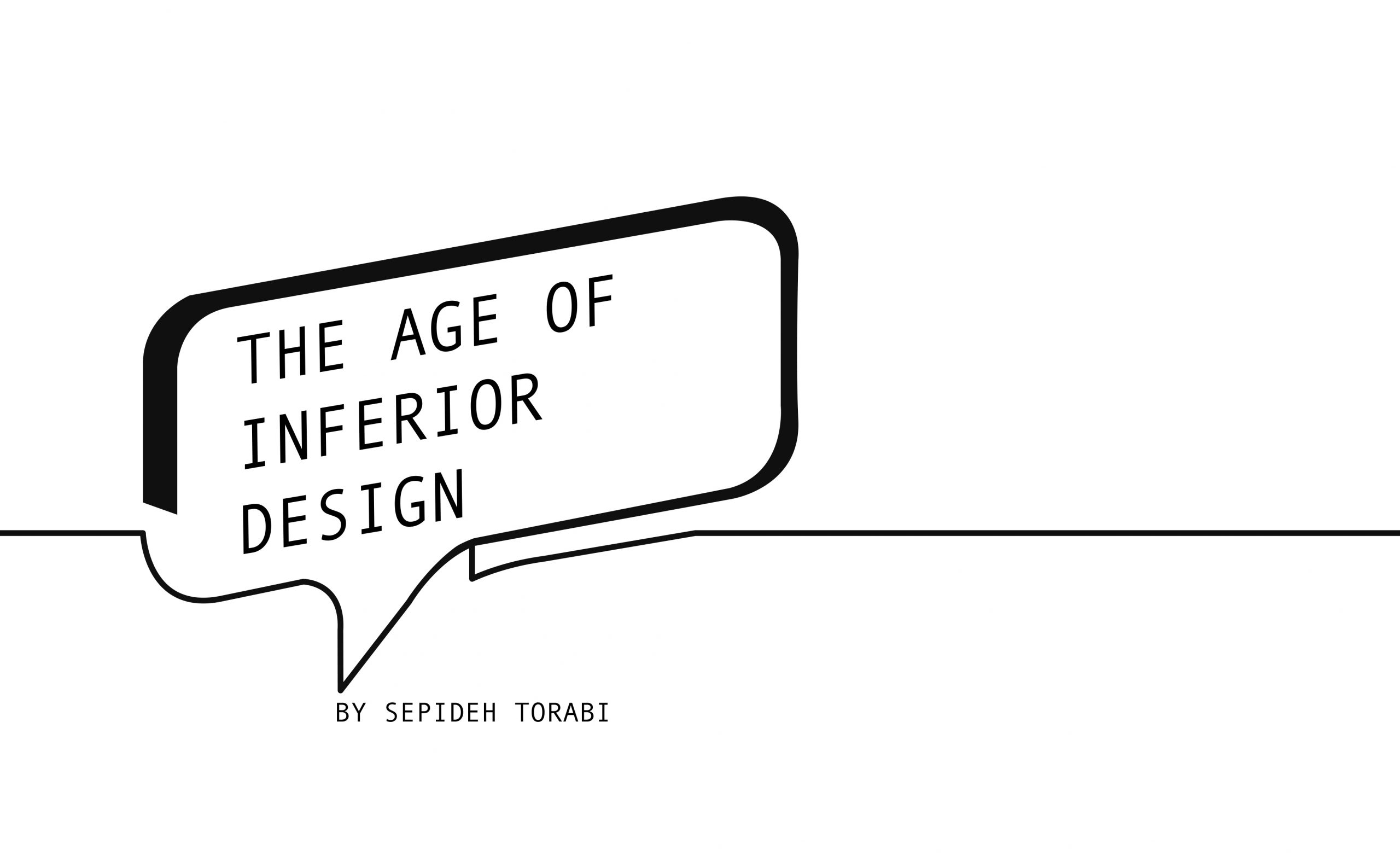The Age of Inferior Design
A critical eye on the design industry—by Sepideh Torabi
Sepideh Torabi is a graphic designer from Dubai. In the following article, she throws a critical eye on the international design scene.
Graphic design, the art of visual communication and problem solving with the use of typography, images, and illustrations has long been established as a prominent practice. For many decades, designers from around the world have used their creative skills to make the design industry robust, worthy, and exciting. However, with the advent of various software systems and the ease of access to technology and people without appropriate education or experience in graphics, the value of design has faded immensely. Understanding this phenomenon is important because it’ll initiate a key conversation about the root causes that contribute to the damaged reputation of the Graphic Design industry.
First, the ease of access to software has created a false perception for many that they possess advanced design skills. Now more than ever, software monkeys profit by creating inferior work and plagiarizing the efforts of hardworking professional designers without any suitable knowledge and respect to the real fundamentals of design and the industry as a whole. The methodology of graphic design requires not only software but also complete training and technique, skills that professionals work hard to gain and take years to achieve.
Second, low-cost automated alternatives are taking over good design practices; there exist many sources that offer $ 5 logo designs created by the side of crowdsourcing and plagiarism. Sadly, It seems originality doesn’t exist anymore.
Additionally, many creative agencies treat graphic designers like the subpar, cheaper alternatives that exist, forcing designers to work under severe pressure with unrealistic deadlines and turnaround expectations. Unfortunately, they know people are too scared to go jobless these days, and therefore, take professionals for granted. However, the question is how do agencies expect a creative mind to create fascinating work under haste and improper deadlines? In addition, many times, companies engage in the unethical activity by asking several designers to pitch design ideas, and shortly after, plagiarize and have a cheaper company execute the best idea that was presented to them.
Consequently, many clients ask for unlimited project revisions with minimal expected delivery time. Such clients do not comprehend the creative process and do not know the actual value of design, as they perceive revisions to “take only a second.” These clients underpay designers and expect repeated business relationships with them. Unfortunately, due to the weak global economy, such practices by businesses force designers to forget their hard work and talent’s worth. “Make it pop; it looks plain, it doesn’t seem designed.” These are just a few examples of adverse phrases graphic designers have become familiar with hearing from their business clients.
Often, clients tend to take on the role of the designer unexpectedly and start advising on design techniques such as choosing colors and angles. In other occasions, clients believe that designers haven’t made any impactful design decisions prior to presenting them to businesses. Such clients believe that all that the designer has done is randomly slap onto the keyboard and produce work that looks like a mistake. It isn’t uncommon for designers to overhear many clients say “if I knew how to use design software, I could do this in no time. Easy!” For an industry of people who look for actionable and specific feedback on their designs and work, clients hardly take the time to give the type of constructive criticism and feedback that designers want to receive.
Unfortunately, since most designers don’t get enough credit they deserve for their hard work and many clients don’t trust a designer’s artistic judgment, designers are discouraged from applying enough effort into the design process. This means that we as designers should accept responsibility for what is happening in the industry. Working for free and undervaluing our work has spoiled business clients. We forget just how important it is to ask for fair compensation in exchange for our talents and services. The conformist nature of the industry has forced many of us not to take projects seriously, recycle old ideas, and allow for dismal brainstorming and sketches.
But what is the solution to this industry-wide issue? The prospect of designers standing up for their worth might seem difficult, but it is doable if we as designers refused to provide free work. Creating designs for free takes away from others taking our hard work seriously. On the other hand, clients must know that Graphic Design degrees are mandatory when hiring designers. While an academic education might not bring creativity along with it, it teaches an individual the art and fundamentals of proper design based on principles. Clients who are looking for the cheapest and most economical options must understand most inexpensive options will cost them more money anyway in the long term. Cheap designs might be tempting, but doing more crafting rounds and looking for designers to make revisions to the cheap designs will end up wasting precious company time and money.
In conclusion, I believe that we as designers must set the rules of our own industry and acknowledge the importance of this conversation. While market trends and finding clients can be difficult, respecting our talent and work will only lead to a much better professional path and future for us as graphic designers.
